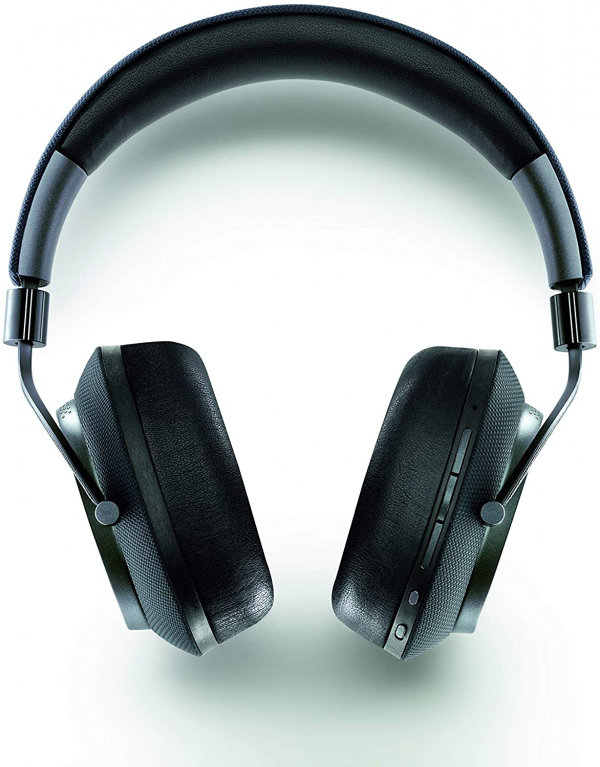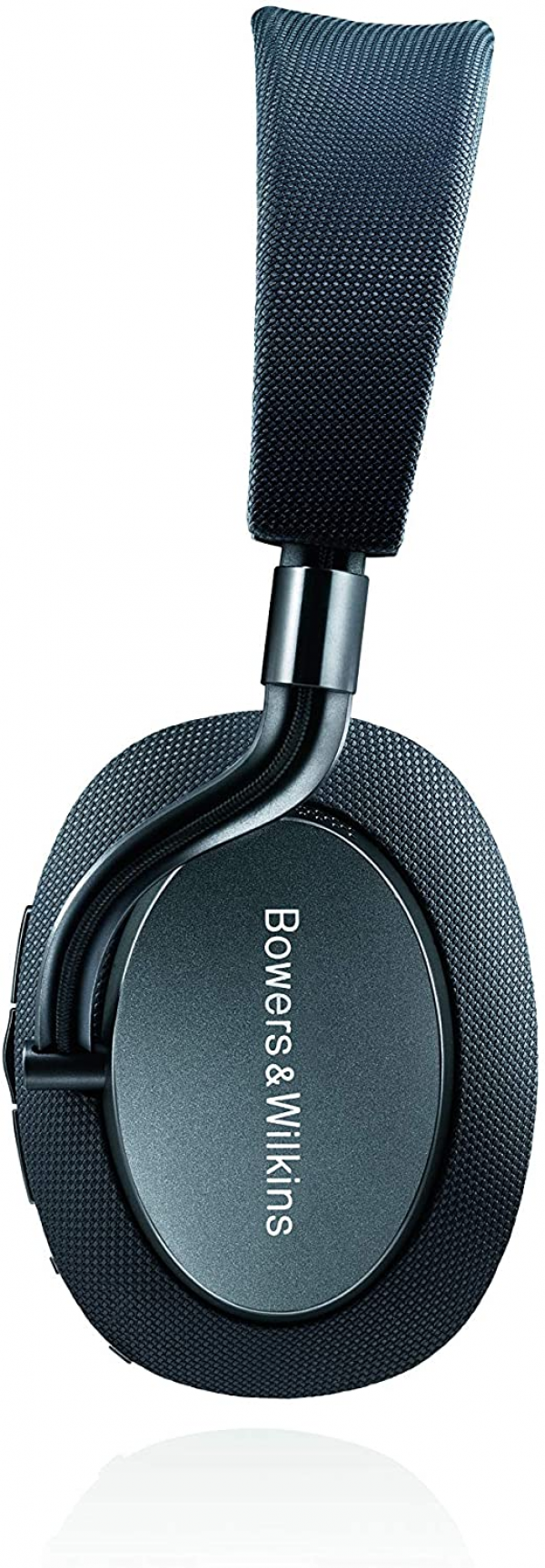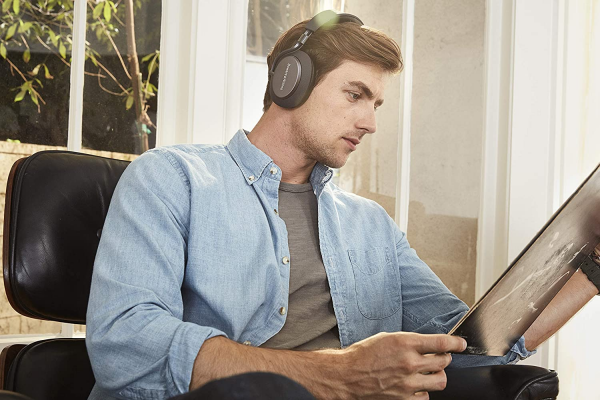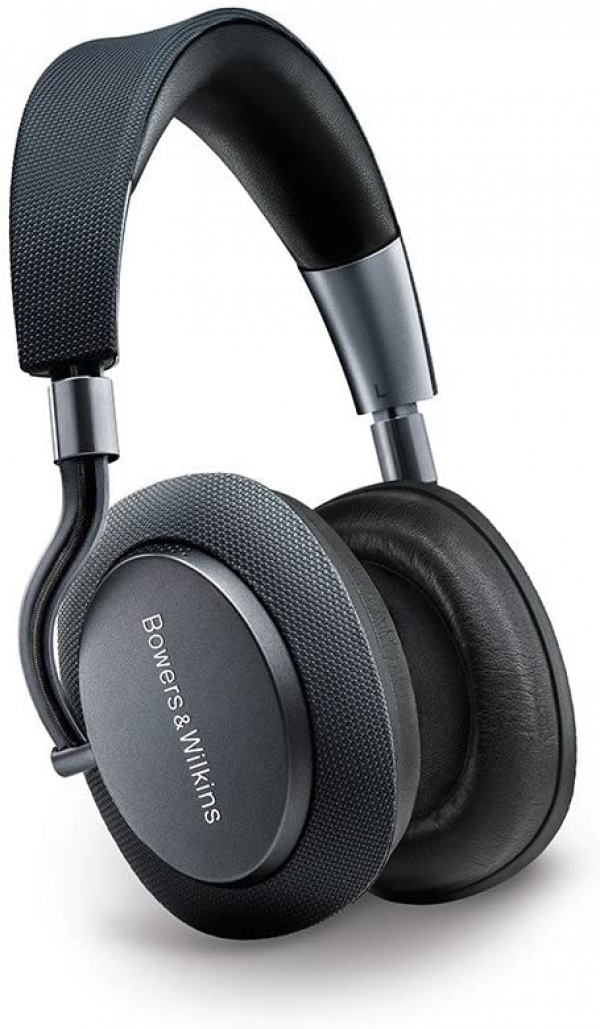Bowers Wilkins
Bowers & Wilkins PX: headphones with uneven noise reduction
Aprox. 305€ - see price -
It was not until 2016 that the venerable British brand Bowers & Wilkins launched its first wireless headsets, evolutions of the proven P5 and P7. A year later, the brand presents this time a brand new model with Bluetooth connectivity and another trendy feature: active customizable noise reduction. However the PX (that's its name), does not yet manage to match the best players in this very populated segment of wireless headphones with RBA ...
Our review
Ergonomics
In broad outline, the PX takes up without surprise the emblematic silhouette of the Bowers & Wilkins helmets, however allowing itself some liberties compared to its predecessors, of which it does not adopt exactly neither the construction nor the luxurious materials. The steel of the frame has given way to aluminum, and plastic is clearly more present on the shell of this helmet. Let us be reassured however: the latest addition to the P range remains a very beautiful object. Perfectly finished, the PX gives an excellent impression in hand, and always retains a touch of prestige thanks to the beautifully crafted leather covering its ear cups and its headband.
Better yet, this new construction allows the PX to be by far the most compact over-ear headphones designed by Bowers & Wilkins. A point necessarily very positive for a helmet above all intended for nomadism.
Compatible with Bluetooth 4.1 (SBC, AAC, aptX and aptX HD codecs), the PX can also be used wired, not only via an analog connection on 3.5 mm mini-jack, but also on computer via USB. This last mode of operation is done in plug & play on both Windows and macOS, and allows you to use the headset control buttons to adjust the sound level directly at the OS level. An excellent point.
For wireless use, the PX has a proximity sensor in the right ear cup and can therefore pause music automatically when removed. After 2 minutes, the headphones automatically go into a hibernation state and their energy consumption becomes almost zero. When you put the headphones back on, it automatically wakes up again, reconnects to the last device used and restarts the music where it left off. The concept recalls that already encountered on Parrot Ziks, but stands out here for its absolutely perfect efficiency and reliability. You can completely use the PX on a daily basis without ever worrying about turning it on or off manually, and without ever wasting more than an insignificant proportion of the battery charge. A real joy.
Unfortunately, comfort does not inspire the same compliments. First there is the arch, whose padding is extremely thin, and which tends to come to rest on an isolated point at the top of the skull; the point at which pain can begin to be felt after only a few tens of minutes of wearing.
Furthermore, if the opening of the ear cups is large enough to accommodate most of the ear flaps (6 cm high by 4 wide), this is done at the expense of the width of the memory foam pads. In fact, these concentrate their pressure on a very narrow surface encircling the ear, and can, depending on the morphology of their wearer, cause significant discomfort, especially at the base of the jaw. This can also prevent the pads from playing their role of acoustic insulation between the user's ears and the outside, which is obviously problematic for active noise reduction - we will come back to this point in the "Audio" section. "from this test.
For orders, B&W has chosen mechanical buttons placed on the right atrium. In addition to the three usual volume / play / pause buttons, there is a button to activate or deactivate the active noise reduction. Unfortunately, this button does not allow you to scroll through the different RBA modes offered by the headset ("office", "city" and "plane", modes to which is added to "voice amplification" slider): to make sound choice, it is essential to go through the Bowers & Wilkins Heapdhones mobile application, available on iOS and Android. It is in this same application that we can deactivate the proximity sensor if desired.
Obviously usable as a hands-free kit, the PX has a microphone offering very good voice pickup in a calm environment. The intelligibility and the naturalness of the voice, on the other hand, suffer clearly in noisy environments, but remain higher than what is usually seen on Bluetooth headsets.
and in a noisy street (right)
The headset's autonomy is promised at 22 hours in Bluetooth with noise reduction, and our measurement is a hair's throw from corroborating this value: we found 21 hours of continuous operation, with a sound volume set at around 50% and a source using the aptX codec - you can count on a few extra minutes of music in SBC or AAC. This autonomy increases to 29 hours in Bluetooth without RBA, 33 hours in wired with RBA, and 50 hours in wired without RBA. The latter is more important than it seems, because it should be noted that the PX is incapable of operating in passive mode: if its battery falls flat, it then becomes mutually silent, even in wired use.

Audio
While it is legitimate to expect from a brand like Bowers & Wilkins products with impeccable audio performance, the manufacturer has so far never managed to convince us fully with its wireless headsets. Unfortunately, the PX continues this trend.
We are certainly not surprised that the manufacturer has chosen to equip its headphones with a fairly soft sound, giving pride of place to the bass and midrange rather than the treble; but we would still have preferred it to be done in a slightly more subtle way. As it stands, the treble extremes, set back by more than 20 dB compared to the low mids, struggle to exist in the perceived sound message. By ear, on some songs, we sometimes even have the impression of not hearing anything above 10 kHz. The result is a dull, fairly metallic, and unnatural sound in its spatialization, despite the good stereophonic width provided by the angled transducers.
Added to this is far from ideal precision in the upper half of the spectrum, especially when noise reduction is activated: as soon as the signal becomes a little loaded above 1000 Hz, the sound takes a very turn draft copy. We sometimes come to dread every hit of a tom-tom or cymbal, these instruments becoming not very drinkable for the eardrums. This observation can be verified both wired and Bluetooth, regardless of the codec used - including aptX HD, a codec whose contribution is perfectly insignificant.
The lower part of the spectrum is doing much better, with a good extension in the sub-bass and a rather good reactivity. The bass does not drag, and the balance found between 20 and 300 Hz allows the timbre of low sounds to be restored with realism and a presence quite satisfactory. The lack of stability of the membranes is still expressed in this region, however, through a non-zero harmonic distortion, but the latter remains below the percent bar and therefore does not translate into really noticeable inconvenience.
The active noise reduction measurement shows absolutely excellent results, quite simply among the best ever achieved in our lab: with an attenuation of 25 dB or more over almost the entire spectrum, the PX manages to do better even than the references that are the Bose QC35 and the Sony MDR-1000X. Unfortunately, we must immediately temper this observation clearly: this performance is only valid when the morphology of the wearer adapts perfectly to the helmet - which turns out to be the case of Rick, our faithful measurement mannequin. But as mentioned in the first part of this test, the very narrow ear cushions rarely succeed in perfectly playing their role of acoustic insulation. In practice, a very significant part of the users will notice a reduction in noise significantly less impressive than what the curve promises. The only way to know whether or not we will be one of them is to find a way to try the headset in person, and compare it directly to its competitors ...
The different modes of active noise reduction prove to be of uneven relevance. The "city" mode, which limits the attenuation of outside noise to around -10 dB so as not to completely isolate the user from his environment, is in our opinion the most useful of all. The "desktop" mode promises to isolate the user from distant conversations while allowing close conversations to appear, but one cannot really say that this objective is achieved. The choice he makes to block the treble and let the bass pass may seem judicious, insofar as it thus blocks only the audio frequencies most stimulating for the human brain, therefore most likely to break the concentration; but with this in mind, we simply prefer to be content with the passive insulation provided by the helmet. As for the voice amplification functionality, it causes a very audible distortion peak around 1500 Hz, which makes its use quite unpleasant.
Finally comes the time to conclude with the latency in Bluetooth, which is around 180 ms, a value in the average of wireless headsets. It allows you to view videos with a clearly perceptible, but acceptable, sound / image offset, unless you are particularly sensitive to the phenomenon.

Conclusion
Despite the fine arguments that the Bowers & Wilkins PX has to make, it is difficult to overlook its few mistakes (which have the misfortune to relate to the two most important aspects of any headset): a perfectible sound reproduction, and far from universal comfort - we strongly recommend trying the helmet in person before making any purchase decision. The fact remains that it has for it its very neat design, its many ergonomic features, and an impressive active noise reduction.

Reviews


EPIC wireless headphones + ANC you might use sometimes
* * * PLEASE READ ALL * * *
First of all I'm a headphone collector. I have multiple high end examples of open backs, closed backs, several DAC & amp setups and wireless headphones. Note that I have the well regarded Sony 1000x wireless ANC headphones sitting right here to compare with the PX. Now should you buy these B&W PX Wireless ANC (Active Noise Canceling) headphones? ..... Maybe, depends on your priorities.
1. Sound Quality Potential: The PX were designed to sound their best with the ANC off. I have to say they sound wonderful with ANC off. They are possibly the BEST sounding wireless headphones on the market (with ANC off). They also have very strong insulation, naturally with their closed-back design and tightly sealing leather ear cups.
2. Active Noise Canceling: The PX have 3 ANC modes: Office, City, Flight.
- Office mode is the lightest ANC and sounds pretty great. In the mobile app you can customize whether or not you want to pass-through the voices of people near you. Office mode works great in the office, coffee shop, or at home. I've been using Office mode when ever I'm not in a quiet listening situation. In Office mode the PX blocks out a lot (slight ANC + good seal / isolation) and still sounds better than my Sony 1000x.
- City mode and Flight mode are much stronger amounts of ANC and these modes prioritize the noise canceling over the sound quality. These modes do not sound as good. Sitting here at my desk they sound pretty awful but what would be the point of playing these headphones in FLIGHT mode while not on a plane? *** UPDATE *** I've taken a trip with the PX now. Office mode is perfect for around the airport. The Flight mode is good on the plane. It's not as effective at canceling the plane noise as the QC35 or 1000x but better than over-ear cans without ANC.
3. Wireless Features: I love that the PX turn on automatically when you take them out of your bag and put them on. I love that the PX pause automatically when you take them off (to talk to someone) and resume playing instantly when you put them back on. I also like the actual buttons on the PX for next, back and volume up / down. Comparatively the Sony 1000x and B&O H9 have complex touch / swipe controls that I have found to be a hot mess. BT range is great and battery life is fantastic.
4. Comfort: The Sony 1000x and Bose offerings might be slightly more comfortable for all-day wearing. I do not mind the weight, ear cups or headband of the B&W PX. I also own the B&W P7 and P9 units and can tell you they get more comfortable over time.
Conclusions: If your priority is music sound quality in wireless headphones for home, office, library, while also occasionally needing ANC ... BUY THESE. If you prioritize noise canceling above all else because you fly all the time, work at the airport, or mow lawns professionally maybe you should buy the Sony 1000x or Bose QuietComfort 35. For me these are what I want in wireless cans and will sell the 1000x.
Ultimately fell short of expectations
I spent a good couple weeks with these headphones and tried very hard to like them. They look and feel phenomenal to touch, and have all of the latest tech and smart features. Bluetooth connection was strong and problem-free, and the wear sensors seem to work exactly as advertised. Being able to turn off / adjust noise canceling is a welcome feature. USB-C charging is awesome. However, there were a few deal breakers that have pushed me to return them.
- Uncomfortable to wear. The ear cushions are more like thin rims around the earcups, and the clamping pressure is high, so they really dig into your skin. Additionally, a pressure point / hotspot begins to develop at the very top of your head where all of the weight seems to be centered. No amount of break-in brought these to an acceptable level. The headphones are some of the heaviest in their class, and so it makes it very difficult to have multi-hour listening sessions.
-A significantly more "neutral" sound than earlier B&W products. They don't have as much of a warm, bassy V-shaped sound signature as earlier headphones like the P7 wireless. Depending on your music preferences, that could be a good or bad thing. Since my music is generally hip hop and R&B, this was a con.
-No passive listening support. You cannot connect these to a standard aux cable and just have them play like a typical wired headset. They must be powered, and that means you will have to replace the battery at some point down the line. B&W doesn't give any information about battery replacement costs and logistics on their website, which is a little annoying. I want to know what system is in place to service these things in the long run.
-Questionable customer service? I emailed a question to their tech support over a week ago and was sent an auto-response promising a reply within two days. Never got one.
Great headphones but need time to be broken-in.
I was skeptical about the PX because I read great reviews everywhere but Amazon. I've owned the P5 and P7 as well as the B&O H8 and H9 as well as some Bose cans.
When I first received these they sounded very plain with the bass being extremely pale, however, the sound stage was phenomenal. I was ready to return these but kept forgetting to bring the box to the post office for about a week and boy I'm glad I didn't.
I kept using these on and off during the week and the sound just kept on improving. I'm not an audiophile kind of listener but towards the end of the week they sounded better than my P5, on par with my P7 but offer better connectivity and they provide a more precise listening experience than my B&O cans. I am particularly impressed by how they were able to provide an astonishing amount of details compared to my B&O H8, my current everyday headphones.
Overall, I think these are great headphones but in my humble opinion, do need time to be broken-in.